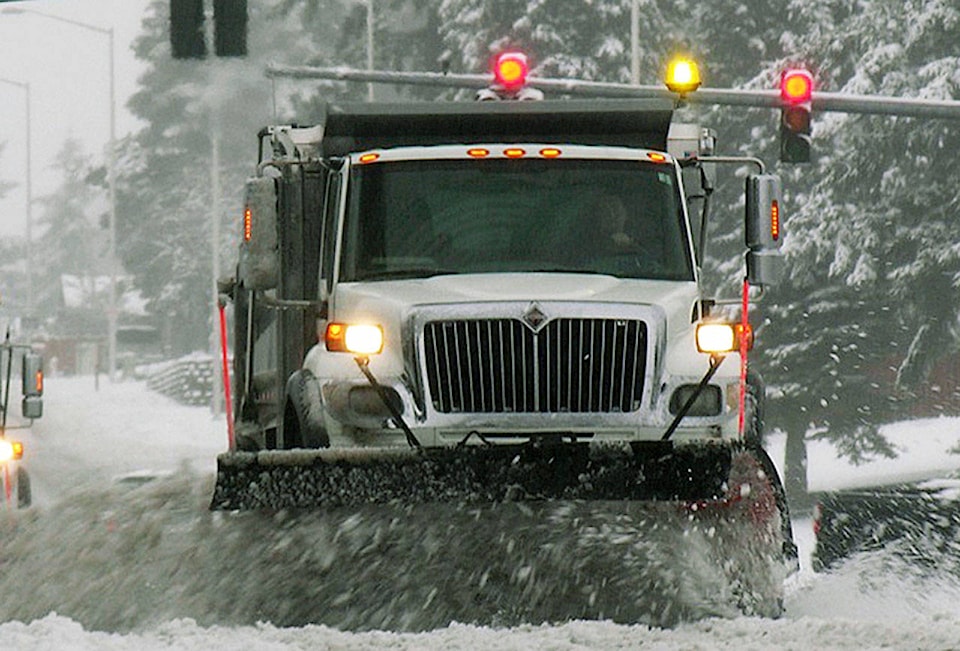Several contractors are working throughout the Capital Region to get the roads clear of ice and snow.
Last night alone, Mainroad South Island Contracting – which is responsible for provincial roads and highways – used 80,000 litres of brine on the roads in their Langford region, which stretches from Highway 14 (West Coast Road) and Highway 17 (Patricia Bay Highway) down to Uptown shopping centre. The brine alone totalled over $26,000.
“We’re trying to keep on top of it, but it’s a bit of a battle,” said Chris Cowley, operations manager at Mainroad.
Mainroad is responsible for ministry roads and numbered highways south of Ladysmith, as well as the Gulf Islands, totalling over 3,600 km of roads.
ALSO READ: More than 65 people slept at Victoria International Airport
ALSO READ: Police continue to advise Greater Victoria drivers to avoid travel unless necessary
Cowley said that roads are prioritized in an A-F scale, with A roads representing main highways, such as the Malahat, B roads being major bus routes, and D roads common side roads, such as Shawnigan Lake Road or roads on the Gulf Islands.
“Technically, we have 21-days to clean up a D-class road, but people have better expectations than that and we try to meet those expectations,” Cowley said.
“A-class roads are usually pretty quick; in the event last night our guys had all the A’s done in a few hours.”
Mainroad has 40 trucks covering the jobs today as well as a few graders and tractors to help along.
In an average year, they use 4.5 million litres of brine to keep the roads safer, with brine that is produced in Cobble Hill and Duncan. Mainroad also uses salt crystals and sand to add more traction to roads.
While snow isn’t easy, Cowley noted that one of the largest safety threats to snowplow operators is other drivers who don’t know about snowplow etiquette, including the legal mandate that they don’t pass snowplows.
ALSO READ: Snow day for students in Greater Victoria; another storm to come
ALSO READ: Island too warm to ‘beet’ the cold
“It’s not a common sight in this part of the world, and people don’t know what to do,” Cowley said, “The maximum snowplow speed is 60 km per hour, but people don’t realize that the road in front of them is usually a lot worse than the road behind.”
Cowley said that impatient drivers often spin out trying to pass a plow, or hit the plow’s undercarriage, causing further delays in the clean-up process.
Municipal roads are covered by each municipality.
In the City of Victoria, there are five large dump trucks with salters and plows, as well as two smaller trucks available to help clear the roads.
Crews also use bobcats with brooms and buckets for some parts of the city, as well as a radial broom to clear the Johnson Street Bridge walkway and a five-tonne truck with a front blade to clear the car deck of the bridge, and its surrounding side streets.
So far the City of Victoria has spent $25,000 to clear snow in 2019.
